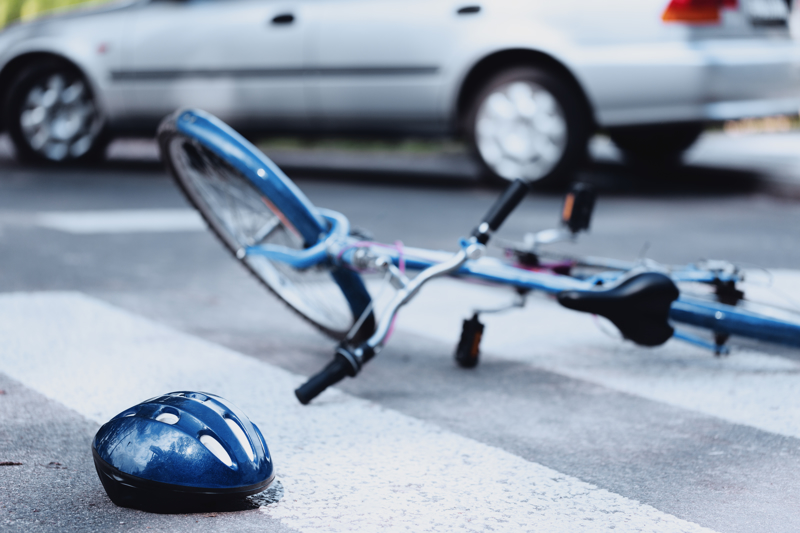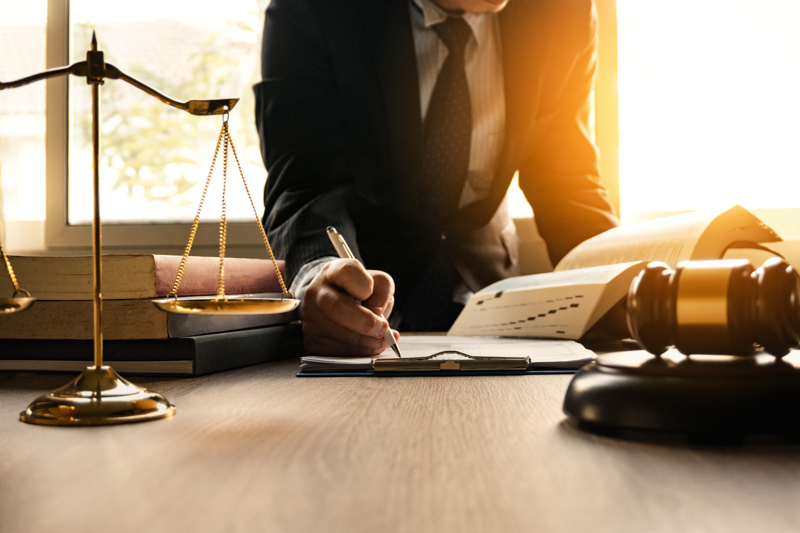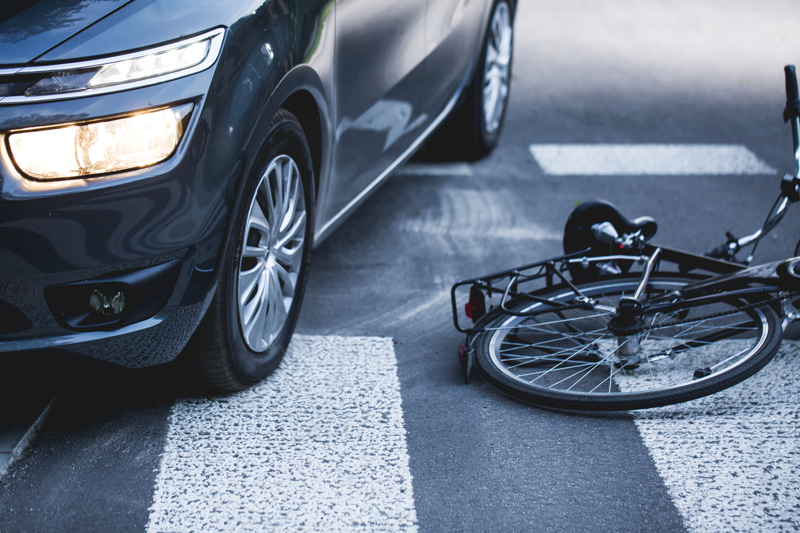Along the roadside, from time to time, you find a white bicycle, alone but for a bouquet of flowers tucked into the wheel. These white bikes do not belong to anyone; they represent the spot where a biker’s life was tragically taken. They also visually remind drivers to be cautious of bikers, and likewise, bikers to be cautious of drivers. If you or a loved one has been injured, or tragically killed, in a bicycle accident, contact the Alabama bicycle accident lawyers at The Vance Law Firm. We are here to fight for you and your family.
Anyone driving and peddling any bike on the road owes each other a duty of care to be cautious and do no harm. Sometimes, however, that duty is breached, and injury, or worse, occurs. According to the National Highway Traffic Safety Administration (NHTSA), the United States experienced a 64% increase, between 2000 and 2012, in persons riding their bicycle to/from work.
No longer are bikes for mere recreational and exercise purposes; they are becoming a means of transportation for many people. In fact, the City of Montgomery has been recognized nationally for its initiative to create bicycle-friendly communities and enhance bicycle facilities. Montgomery currently has more than 156 miles of bicycle infrastructure throughout the city. With an increase in bicyclists, unfortunately, comes an increase in an accident involving bicyclists.
If you or a loved one has been injured or killed in a bicycle accident, and it was not your fault, then you have a legal claim. The Vance Law Firm is a leading Alabama personal injury law firm and will assess the facts of your case, determine who is responsible, and fight for your compensation for your injuries.
The Dangers of Bicycle Accidents
Bicycle accidents often end in death or very serious injury for the bike rider because the bike rider is very vulnerable; apart from a helmet, there is basically nothing to protect the biker from the impact of the vehicle. The more cyclists on the streets, the more likelihood of accidents.
Bicycle accidents can happen anywhere in Alabama, but generally, they are more likely to happen in urban areas outside of intersections. According to the NHTSA, 33 percent of bike accidents happen at intersections while the remaining 67 percent occurred in multiple other locations. In 2014, according to Alabama’s Department of Transportation, there were a total of 203 accidents involving bikes, which resulted in 195 percent injuries and 8 fatalities. Thus, in almost all incidents, the biker was injured. Half of those killed were under the age of 25.
| Bicyclists Involved in Crashes by Age (ADOT) | |||
| Age | Crashes | Injuries | Fatalities |
| 0-5 | 3 | 3 | 0 |
| 6-10 | 16 | 115 | 1 |
| 11-15 | 23 | 21 | 2 |
| 16-20 | 28 | 28 | 0 |
| 21-25 | 12 | 11 | 1 |
| 26-30 | 12 | 12 | 0 |
| 31-40 | 25 | 24 | 1 |
| 41-50 | 22 | 21 | 1 |
| 51-60 | 32 | 31 | 1 |
| 61-70 | 20 | 20 | 0 |
| 71-up | 5 | 4 | 1 |
| Other | 5 | 5 | 0 |
| TOTAL | 203 | 195 | 8 |
Awareness of bicyclists and campaigns to share the road may be helping. The number of crashes from 2005 to 2014 decreased by 26 percent, from 275 crashes to 203 crashes. That said the percentage of those injured was higher in 2014 (at 96%) than in 2005 (at 78%).
What are Bicycle Accidents Caused by in Montgomery?
Bicycle accidents can be caused by either the bike rider or the driver of the car.
Primary Cause of Bicycle Accidents by Car Drivers
- Drivers getting too close to cyclists;
- Drivers speeding;
- Drivers losing control of their vehicles;
- Drivers failing to yield the right-of-way;
- Drivers driving aggressively;
- Drivers under-estimating or over-estimating the speed of a cyclist;
- Drivers failing to see cyclists in time before striking them;
- Drivers, in bad weather conditions, failing to stop in time so that they do not hit a cyclist;
- Drivers driving while drowsy or who have fallen asleep; and/or
- Drivers driving while distracted or impaired.
Primary Cause of Bicycle Accidents by Cyclists
- Cyclists failing to yield to traffic; and/or
- Cyclists improperly crossing a street.
Most of the accidents in Montgomery generally amount to driver’s inability to fully understand how to safely share the road with cyclists, or who simply don’t care to share the road with cyclists.
What Injuries do Bicycle Accidents Cause?
Generally, the driver and passengers of the vehicle are fine; it’s the cyclist who is in grave danger when an accident occurs. Injuries are not always the result of an impact, but a cyclist can be injured even if the vehicle did not make contact with them. Sometimes if a vehicle veers too close, the cyclist will swerve, lose balance and fall. Injuries can range from the ego getting hurt to death, but more than likely something in between.
Injuries include:
- Scratches
- Orthopedic Injuries
- Road Rash
- Head Trauma & Brain Damage
- Disfigurement
- Dearth
Injured victims have a legal right to be fully compensated for all costs stemming from the crash if the fault was the motor vehicle driver. If death occurs, then surviving family members can pursue wrongful death damages. Filing a third-party insurance claim or filing a lawsuit will be necessary to obtain compensation.
Hiring a skilled Alabama bicycle accident lawyer will be the preferred means, especially because in such cases the damages are usually extensive and many bicyclists may not have specific insurance to help them with all of the subsequent financial (and emotional) costs.
How is Negligence Proven in an Alabama Bicycle Accident?
Drivers not only owe a duty of care to other drivers on the road, but to cyclists who also use the road. If you, as the driver of a vehicle, fail to see a cyclist and then strike that cyclist, failure to see him riding his bike is not a defense but rather negligence, which makes you liable for all damages stemming from the accident.
Also, an actual “collision” between the motor vehicle and the cyclist is not necessary in order to confer liability on the driver of the vehicle. For example, if the driver is speeding or veers too close to the bike rider, and in so doing forces the bike rider to suddenly moves out of the way in fear of injury and, thus, is injured, the driver can be held accountable for his negligent driving.
But if a cyclist is at all at fault, even a teeny tiny bit, then in Alabama, the cyclist will not recover any damages. For instance, what if the cyclist suddenly moves into the road to avoid a turtle, while the driver of the vehicle notices it and rushes past in an attempt to avoid the biker? The biker, frightened by the speed, swerves again and falls.
The doctrine of contributory negligence states that (1) if you are even 1 percent negligent; and (2) if your negligence approximately causes the subsequent injury, then you will be barred from any legal remedy or recovery. The experienced bike accident lawyer at The Vance Law Firm knows how to overcome the contributory negligence defense. But to prevent being in this situation in the first place, it is imperative that cyclists do all that they can to be safe on the roads.
Bicycle Accident Safety Tips
As already mentioned, when accidents occur involving a motor vehicle and a cyclist, the cyclist is most likely to be injured and almost never the driver or his passengers. According to the National Highway Traffic Safety Association, in 2014, cyclists accounted for 2 percent of all traffic deaths and 2 percent of all crash-related injuries. Deaths occurred mostly in the evening from 6 p.m. to 9 p.m. (20%) and were highly concentrated in urban areas (71%). Surprisingly, approximately 20 percent of cyclists who are/were killed in crashes had blood alcohol concentrations (BACs) of .08 grams per deciliter (g/dL) or higher, which is the illegal alcohol level throughout the United States.
As in all accidents on the road, most occur due to human error, and as such, most can be prevented if motorists and cyclists shared the road and obeyed the rules.
What can you do to increase safety?
Wear Protective Gear, Properly
- Wear a helmet that fits. You should make it a habit to wear a helmet for each and every bike ride. But it is important that you wear the helmet properly or else there is no point in wearing it. The helmet should fit snug and be aligned perpendicularly on your head. It may take fitting a couple of helmets on your head first to find the right fit, but your life very well could be dependent on it. Helmet sizes can vary according to manufacturers. For a list of helmet sizes according to manufacturers, go to the Bicycle Helmet Safety Institute (BHSI) Web site at helmets.org.
- Wear protective gear. Apart from a helmet, you can and should also wear protective gear for elbows and knees. This type of gear is particularly important for children.
- Wear bright clothes. Bright clothes can make it a little easier for motorists to see you.
Be Equipped With the Right Bike and Equipment
Wearing the right protective gear is just as important as having the right bike that fits you and the right equipment for the bike. The following are tips are taken from the NHTSA:
- Ride a bike that fits you. Make sure the bike is not too big. If it is, it can be harder to control the bike.
- Ride a bike that works. Always keep up with bike maintenance and inspect it regularly. A bike is no good if the brakes don’t work when you most need them.
- Use reflective gear and lights. Not only does equipping the bike with a red reflector and white light make you safer, especially at night or when visibility is low, but it’s the law.
Alabama code 32-5A-265 requires that you equip your bike with a lamp that emits a “white light visible from a distance of at least 500 feet to the front” and a “red reflector on the rear of a type approved by the department which shall be visible from all distances from 100 feet to 600 feet to the rear when directly in front of lawful lower beams of headlamps on a motor vehicle.” To note with regard to the red reflector, it must be a red reflector, not a lamp with a red light.
Obey Alabama Traffic Laws
In Alabama, bike riders must obey some of the same laws as motorists. Bike riders also owe a duty of care to fellow bikers, motorists and pedestrians. Below are some of the basic laws and duties bikers must adhere to.
- Passing laws: There are no specific laws pertaining to passing bicycles in Alabama, motorists, and bikers must adhere to general traffic rules. Accordingly, if a motorist wants to pass a cyclist, he should do so by leaving a safe distance between the two.
- Traffic direction. Cyclists should go with the flow of traffic; thus, they should ride in the same direction.
- Crossing traffic. If a cyclist needs to cross traffic, you should slow and look for traffic using the same left-right-left and behind method as pedestrians. When available, use pedestrian signals to cross.
- Helmet law. As mentioned, it is important to wear a helmet that fits you, but it is the law to wear a helmet if the cyclist or passenger is under the age of 16.
- Lane Position. According to Alabama law, a bicyclist must ride the bike as close to the right-hand edge of the road as possible. There are no exceptions to this rule.
- Sidewalk Riding. In Alabama, bicycles are not permitted on the sidewalk unless it is expressly permitted to be there. When, however, there is a path that is expressly for bicycles, then the bicyclist can use the path alongside pedestrians.
- Riding a Bike Under the Influence. Just like driving a vehicle, a cyclist should never ride a bike after drinking alcohol or doing drugs. In Alabama, a bicycle is included in the definition of a “vehicle” that is to the same laws as motorists driving (or riding) under the influence of alcohol or drugs. As crazy as it sounds, bicyclists have been found with illegal BAC levels. Riding impaired prevents you from operating the bike properly and safely.
- Stop signs. Alabama bicycles must adhere to the same traffic signs as motorists. You must come to a complete stop when directed to stop by traffic lights or stop signs. Some traffic lights are set up to detect bicyclists who fail to obey traffic lights.
- Watch for pedestrians. Pass pedestrians with care and declare your presence by first using a bell and/or announcing it by using common phrases: “on your left” or “passing on your left.”
Ride Responsibly and Defensively
There are two primary types of bicycle accidents. The first, the most common, is the bicyclist falling, which doesn’t include another vehicle or bicyclist. The second is a collision with another bicyclist or motor vehicle, which are always the more serious and can lead to death. You must take steps, as a cyclist, to reduce your chances of a crash. Biking responsibly and defensively is always appropriate and necessary.
- Stay focused. Remain focused and vigilant with respect to the road, the traffic, and all other surroundings. Anticipate what others might do so that you are prepared to react, if necessary.
- Assume others can’t see you. When you assume others can’t see you, you will tend to bike safer. Always look for hazards that may be ahead or around you so that you can prevent a fall or collision.
- One seat, one person. Ride with only one person per seat; it’s dangerous to do otherwise. Keep both hands on the handlebars, unless signaling to traffic.
- Secure items. Securing all items that you are carrying either in a backpack or strapped on the back of the bike in some kind of basket is a safety precaution that should always be taken. Besides, it’s also the law.
- Tuck and tie. Make sure shoelaces are tied and tuck in your pant legs so that they don’t get caught in the chain.
- Know where you’re going. Always plan your route. Know the roads, the speed, and general traffic. If you can choose a bike path over the road, choose the path.
Drivers, Be Aware of Cyclists
If you’re a motorist, you should know that cyclists have the same rights as you do. You owe them the same duty of care as you do anyone else using the road. To be safer and prevent accidents, be responsible and heed the following:
Distracted Driving Laws
Distracted driving creates one of the most dangerous situations for motorists and bicyclists alike. Each state has its own laws to try to minimize distracted driving, and Alabama is the same. Here, it is unlawful to operate a vehicle and attempt to read, write or send a text message on an electronic device. Motorists should refrain from using any electronics or conducting any other kind of behavior that will distract them from driving. If you are doing some, and an accident occurs, you will likely be found liable for all damages, both economic and non-economic.
Yield to the Less Protected
You may think you have time to turn before a cyclist arrives at the intersection, but you should not underestimate her speed; they can be faster and closer than what they appear.
Be Aware of Your Surrounds
Whether it’s in a parking lot, at traffic lights or stop signs, parking or anything else, it’s always important to check for other vehicles, bicyclists, and pedestrians.
Motorists should always check to the right and behind them before turning to the right to make sure bicyclists and/or pedestrians are not there. Stop completely, check left-right-left and behind and then turn right (do so especially if turning on a red signal).
Obey Speed Limits
Always go the speed limit, or reduce speed if road and weather conditions demand it.
Be Courteous
Though not the law, be courteous and give cyclists room to ride their bikes. Do not get too close.
Contact an Alabama Bicycle Accident Lawyer
At The Vance Law Firm, no case is too big or too small for our experienced bike accident lawyers in Alabama. If you have been involved in a bicycle accident caused by someone else’s careless, negligent or reckless conduct and are seeking assistance, contact The Vance Law Firm. Our bike accident lawyers are experienced, aggressive, and resourceful and are ready to serve you in Montgomery and all surrounding cities and counties.




